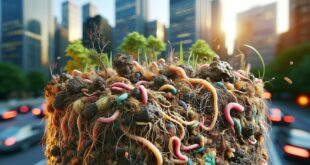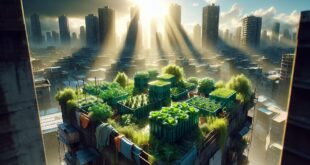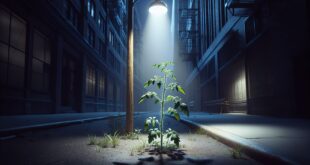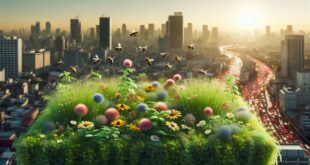Urban agriculture transforms city landscapes into thriving hubs of sustainability and community spirit. By reducing food miles, enhancing local economies, and fostering education and empowerment, this green movement brings nature back to the urban core. Imagine cities where lush rooftops and vibrant community gardens flourish, supporting local businesses and fostering resilient economies. Explore the pivotal role of partnerships, technology, and supportive policies in building this interconnected, holistic economic model. Discover the revolution of growing greens in the concrete jungle, where every seed planted is a step towards a more vibrant and sustainable future.
Read More »Sustainable Sanctuaries
The Challenges of Maintaining Soil Health in Urban Gardens
Urban soil is a complex blend of construction residue and pollutants, posing challenges for city gardens. Understanding its dynamics is crucial for improving food quality and plant health. While contaminated and compacted earth may seem daunting, sustainable practices like composting, mulching, and soil aeration can transform these plots. Urban gardening, through community collaboration and smart soil management, nurtures vibrant ecosystems, connecting nature with cityscapes and fostering sustainable futures.
Read More »Urban Foraging: Finding Edible Plants in the Concrete Jungle
Unveiling nature's secret bounty amidst urban landscapes, urban foraging invites us to rediscover wild, edible plants thriving in city spaces. From the versatile dandelion to the fragrant wild garlic, these resilient plants not only enrich the urban culinary palette but also reconnect us with nature's seasonal gifts. Embrace the art of foraging as a conscious journey, respecting nature's rhythms and nurturing a sustainable connection with the environment. Dive into this hidden culinary adventure and discover the liberating joy of gathering your own food right in the heart of the city.
Read More »The Benefits of Rain Gardens in Urban Settings
Rain gardens transform urban environments by blending green infrastructure with natural processes to manage stormwater, enhance biodiversity, and foster community engagement. As living sponges, they mitigate flooding while rejuvenating neighborhoods with native flora and fauna. These spaces harmonize human habitats with nature, demonstrating resilience and sparking a ripple of environmental stewardship.
Read More »DIY Wind Turbines: Harnessing Wind Energy in the City
Urban wind patterns offer unique challenges and opportunities for harnessing wind power. Understanding how buildings and natural features shape air currents can lead to effective and sustainable energy solutions in cityscapes. Selecting the right wind turbine, considering factors like type, size, and material, is crucial in transforming urban areas into renewable energy hubs. With proper planning and maintenance, wind turbines can seamlessly integrate into the urban environment, contributing significantly to a sustainable future.
Read More »The Role of Urban Farms in Food Security
Urban agriculture weaves food security, ecological repair, and community agency into the urban fabric—quietly challenging broken systems and sparking regeneration in unlikely places.
Read More »The Impact of Light Pollution on Urban Gardens
Artificial light disrupts plant rhythms and confuses pollinators, quietly undermining urban agriculture. From spindly stems to missed pollination, the glow of night carries invisible consequences — ones that accumulate across courtyards, rooftops, and community plots.
Read More »Urban Homesteading: Skills Every City Dweller Should Learn
Urban homesteading reclaims food, waste, and broken things as sources of connection and resilience—transforming tiny spaces into living systems. From windowsill gardens to worm bins and toolkits, sustainability thrives in the cracks where creativity meets care.
Read More »The Benefits of Green Roofs in Urban Sustainability
Green roofs transform urban landscapes by cooling buildings, managing stormwater, and restoring biodiversity—all while offering long-term savings and resilience. These living rooftops weave nature back into city life, challenging how infrastructure is built, valued, and shared.
Read More »Aquaponics Systems for Urban Homes: Fish and Veggies Together
Aquaponics transforms compact urban spaces into self-sustaining ecosystems where fish and plants thrive together. Rooted in ancient practices, this symbiotic method blends nature, rhythm, and modern design—inviting balance, care, and a deeper connection to food and environment.
Read More » DS Haven In Light Of Things
DS Haven In Light Of Things









